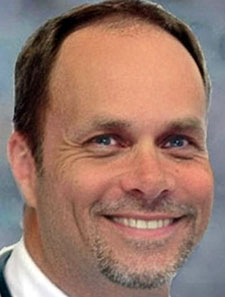 Quoting the leadership guru Simon Sinek, April Burke, vice president of advanced practice providers at Sound Physicians, set the tone of her SHM Converge session in Las Vegas: “Leadership without structure is like a compass without a needle. It gives you potential but no direction.” This analogy provided an engaging session on the critical role of advanced practice providers (APPs), nurse practitioners (NPs), and physician assistants (PAs) in hospital medicine and the need for structured leadership to harness their growing presence.
Quoting the leadership guru Simon Sinek, April Burke, vice president of advanced practice providers at Sound Physicians, set the tone of her SHM Converge session in Las Vegas: “Leadership without structure is like a compass without a needle. It gives you potential but no direction.” This analogy provided an engaging session on the critical role of advanced practice providers (APPs), nurse practitioners (NPs), and physician assistants (PAs) in hospital medicine and the need for structured leadership to harness their growing presence.
Since 2008, the use of APPs in hospital medicine programs has climbed steadily from 27% to 84% in 2023 and is expected to increase by a further 30% over the next decade. This can be seen as a reflection of the APP’s indispensable role in addressing workforce shortages and patient care demands. This rapid growth provides many challenges. Ms. Burke described a 30% decline in professional fulfillment among APPs, with 24% finding their work neither challenging nor satisfying. With financial stakes high and certainly going to grow, turnover costs can be as high as $250,000 per provider.
Ms. Burke noted that leadership roles can offer a solution to these challenges. The data presented shows that 16.7% of PAs currently serve as formal leaders, 22% as informal leaders, and 23% expressed an interest in leadership. However, 37.5% are uninterested in leadership, which shows the need for targeted strategies to engage and develop future leaders.
Strong APP leaders can drive growth, enhance workflows, and create team cohesion at all levels, making this important for sustainable HM programs. To make the case for APP leadership, Ms. Burke and Suzanne Sonnenberg, a PA hospitalist at UT Health San Antonio, emphasized that it is not simply beneficial, it’s essential. Leaders in these roles improve retention, streamline operations, and advocate for APPs within the complex hospital systems.
They identified diverse leadership opportunities across three domains—medical education (APPs serving as mentors, preceptors, instructors, program directors, academic coordinators, professors, or deans shaping the next generation of providers), clinical operations (manager, lead, or associate program directors overseeing critical functions such as onboarding, scheduling, retention, and wellness initiatives), and committees and research (leading quality improvement initiatives, chairing committees, serving as site directors, acting as investigators, or sitting on institutional review boards).
The speakers, using real-world examples, illustrated these roles. In an academic hospital medicine program, there can be positions such as associate director for onboarding and scheduling (having 6% protected time) or fellowship director (10% protected time), which provide structured leadership opportunities. Community hospital medicine programs may feature APPs as department chairs, vice chairs, or credentials representatives. Finally, in national medical groups, roles like chief or vice president of APPs (100% protected time) or site-specific leads (supported by stipends) reflect the scalability of APP leadership across many different settings.
To create a roadmap for implementation, the speakers provided a clear, actionable framework for building an APP leadership team:
- Identify needs and goals—assess gaps in workflow, retention, or professional development to define the role’s purpose
- Develop structure—create detailed job descriptions, reporting lines, and protected time allocations to ensure clarity and sustainability
- Socialize the plan—present the proposal to stakeholders, physicians, administrators, and APPs to gather feedback and build buy-in
- Adjust and recruit—refine the plan based on input, then recruit candidates, ideally from within the organization, to leverage institutional knowledge
- Provide and monitor—provide comprehensive onboarding and monitor performance through ongoing evaluations and metrics
Selecting the right candidate cannot be stressed enough. Ms. Burke recommended hiring APPs with at least two years of hospital medicine experience and conducting interviews with physician leaders to assess key competencies, such as communication style, conflict management, understanding of APP integration challenges, and knowledge of different APP models. Loyalty and alignment with the organization’s vision are critical to ensure long-term success.
Defining the success of the new APP leadership requires clear, measurable metrics, such as reducing attrition, increasing recruitment, boosting productivity, improving Hospital Consumer Assessment of Healthcare Providers and Systems scores, and decreasing readmission rates.
Conversely, barriers to implementation—such as securing institutional support, justifying costs, identifying personnel with a shared vision, and ensuring long-term sustainability—can be significant. Ms. Sonnenberg noted that building a robust program can take as long as 18 months, which requires resilience and realistic expectations. To overcome resistance, both Ms. Burke and Ms. Sonnenberg advocated for the persistent socialization of ideas. Attending meetings, forging relationships, and selecting a credible spokesperson are important steps as well. You need to convey a clear vision of APP alignment when having discussions with the administration. Ms. Burke advised emphasizing the need for negotiation and compromise to secure stakeholder support. Engaging with hospital governance and understanding the bylaws, medical staff leadership and committees, medical executives, credentialing, quality improvement, and peer review empowers APPs to navigate and influence system-level decisions.
The speakers distilled the session down to several key lessons:
- Set realistic expectations—change is often gradual, which demands patience and persistence
- Seize opportunities—use every chance to pitch ideas, build alliances, and attend meetings
- Choose spokespersons wisely—a trusted advocate can significantly influence outcomes
- Foster community—a sense of belonging enhances engagement and retention
It has been shown that the long-term outcomes of effective APP leadership are transformative. Programs that invest in these roles see improved recruitment, standardized training, enhanced educational opportunities, and better clinical metrics. As professional development flourishes and a leadership pipeline emerges, these are often supported by NP and PA programs with the means of cultivating future talent.
Ms. Burke and Ms. Sonnenberg closed by giving a compelling call to action for the hospital medicine community—hospital medicine programs must prioritize APP leadership to address the workforce challenges and capitalize on the growing role of APPs. By creating structured roles, socializing the plans thoughtfully, and measuring outcomes rigorously, programs can build resilient and high-performing teams. Ms. Sonnenberg said that APPs aren’t just at the table to be heard but will, at times, lead.
The conversations during the session showed that hospitalists, administrators, and APPs understood the message that investing in APP leadership is not only a strategy for today but also a blueprint for the future of hospital medicine. Groups that empower APPs to lead enhance patient care, improve team dynamics, and ensure sustainability in an evolving healthcare landscape.
 Mr. Facklam is an adult hospitalist, nurse practitioner, and nocturnist with Apogee Physicians at South Georgia Medical Center in Valdosta, Ga.
Mr. Facklam is an adult hospitalist, nurse practitioner, and nocturnist with Apogee Physicians at South Georgia Medical Center in Valdosta, Ga.